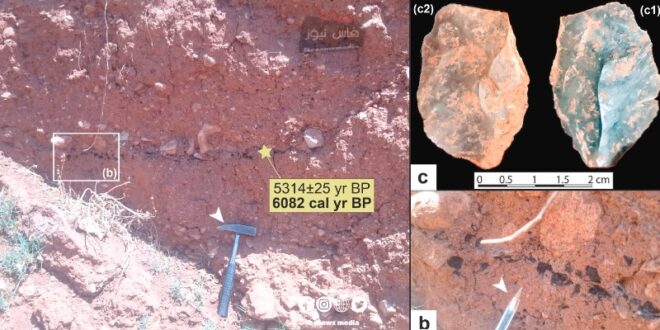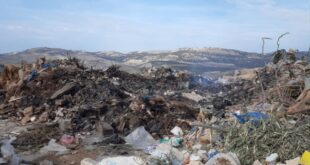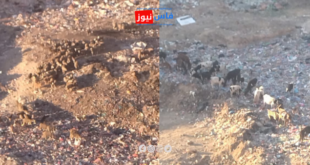A Moroccan-Swiss scientific team has uncovered a significant archaeological discovery dating back to about 6000 years before present, making it the oldest precisely dated evidence of human settlement in the Inaouene Valley region east of Fez.
The archaeological site was found on the banks of the Inaouene River near the national road connecting Fez and Taza. The site contains polished stone tools, as well as ash and charcoal remains from an ancient fireplace.
Dr. Mohamed El-Ghamour, the geological researcher and lead author of the study, told Fez News: “We believe these findings are the oldest precisely dated evidence of human presence in the area known as the Fez/Taza corridor.” He added that this discovery predates by about 2000 years the previously known earliest evidence of human impact in neighboring areas.
El-Ghamour explained that the study suggests the ancient inhabitants of the region developed a hybrid lifestyle combining agriculture and settlement on one hand, and hunting and nomadism on the other. This is attributed to the harsh climatic changes the region experienced during that period, characterized by the end of the African Humid Period and accompanied by chronic drought and massive forest fires.
The researcher emphasized the importance of this discovery, considering it an open invitation for archaeology specialists to conduct more excavations in this area, which is believed to contain a significant amount of undiscovered human artifacts.
It’s worth noting that the scientific team behind this discovery consists of members from the Faculty of Sciences Dhar El Mahraz at Sidi Mohamed Ben Abdellah University in Fez, and the Swiss Federal Institute in Zurich. The researchers used radiocarbon dating technique to accurately date the archaeological finds.
The researchers hope that this discovery will contribute to shedding more light on the history of human settlement in North Africa and provide a better understanding of how ancient humans adapted to severe climate changes.
The team used sedimentological evidence, including high concentrations of charcoal particles within clay-rich deposits, alongside the archaeological finds, to infer ancient human impact on the environment.
This discovery opens new avenues for archaeological research in the region, potentially rewriting our understanding of early human presence and adaptation strategies in North Africa.
 فاس نيوز ميديا جريدة الكترونية جهوية تعنى بشؤون و أخبار جهة فاس مكناس – متجددة على مدار الساعة
فاس نيوز ميديا جريدة الكترونية جهوية تعنى بشؤون و أخبار جهة فاس مكناس – متجددة على مدار الساعة













